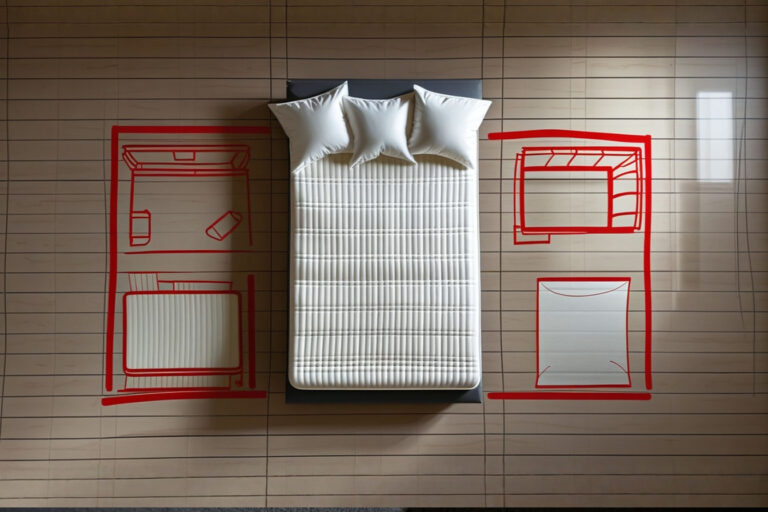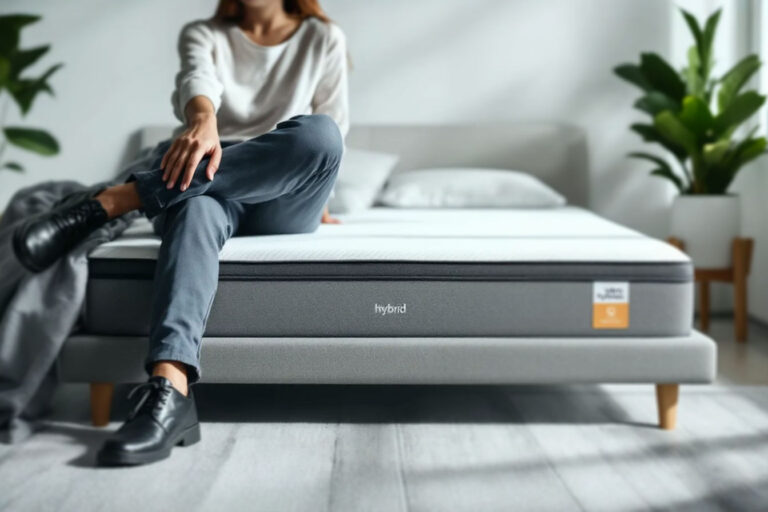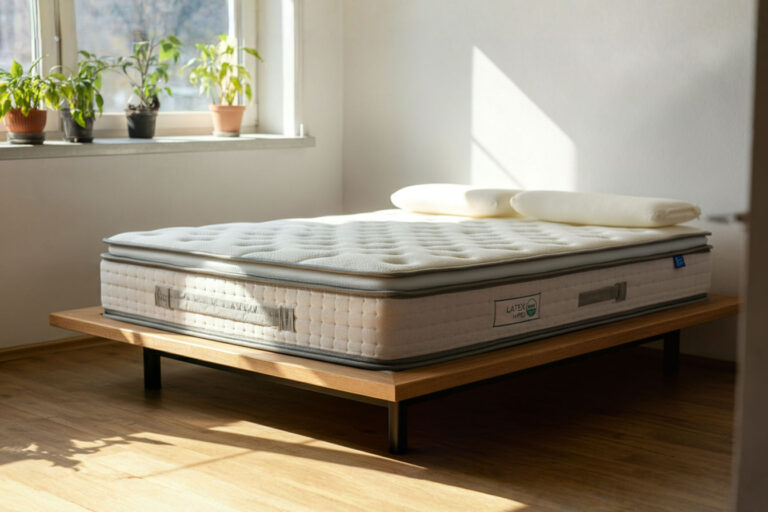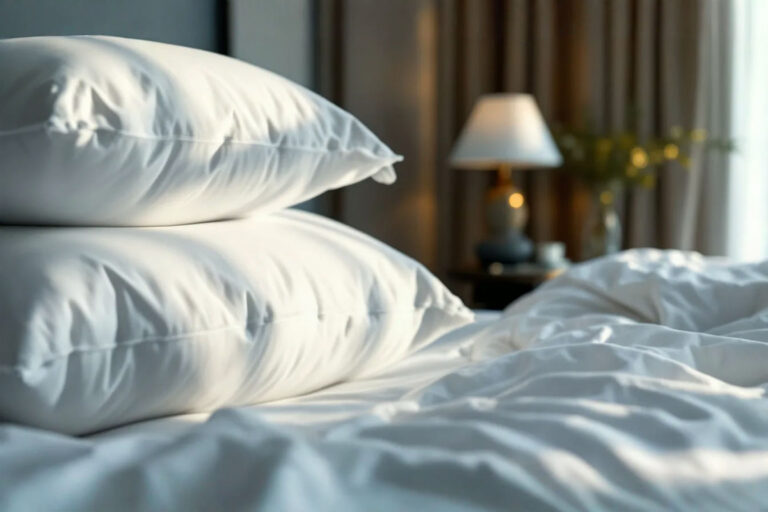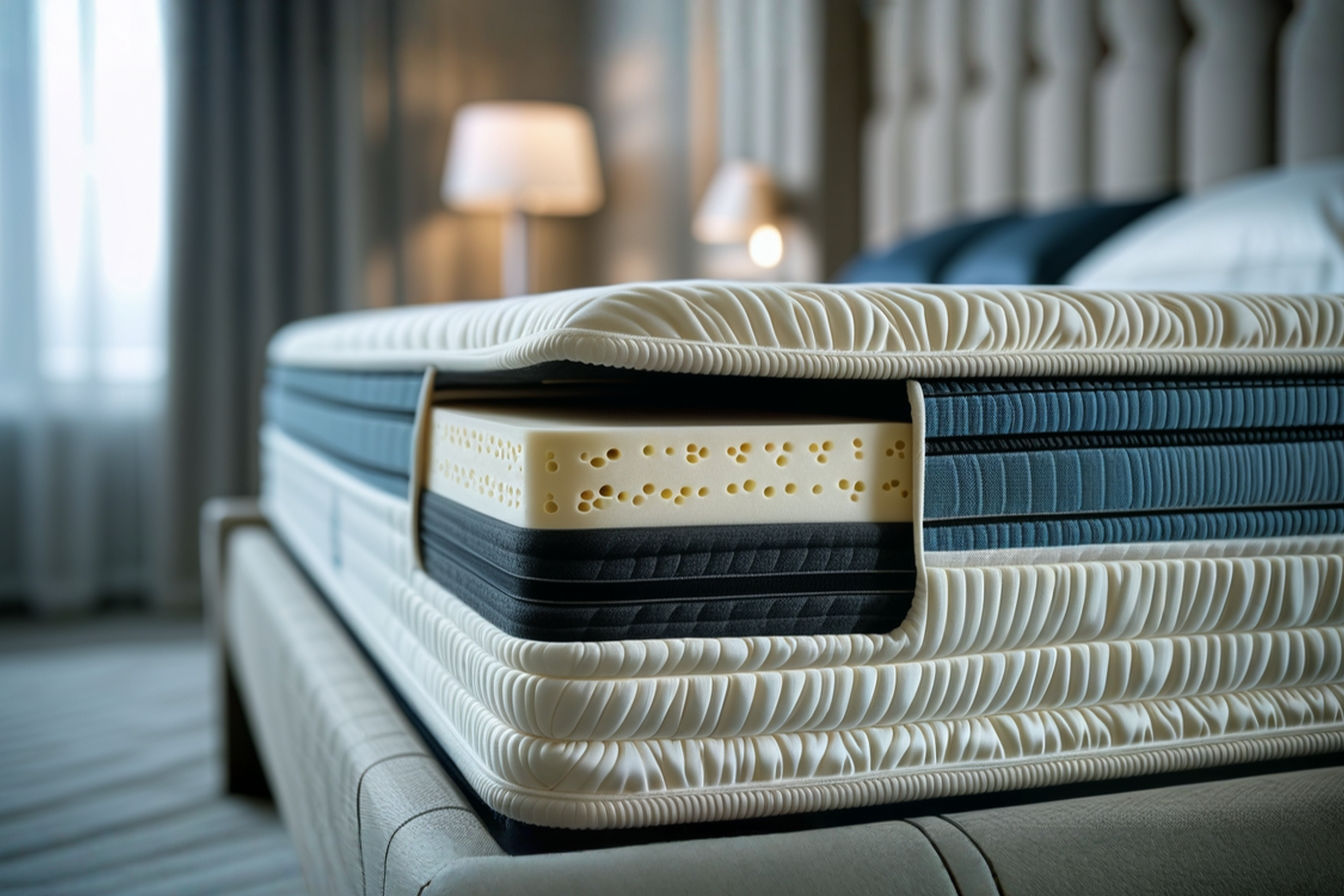Top Brands for Mattress Luxury: Why Small Boutique Makers Are Outperforming Major Labels
Tired of mass-produced mattresses? Explore the world of boutique luxury makers and find out why their handcrafted quality is changing the game…
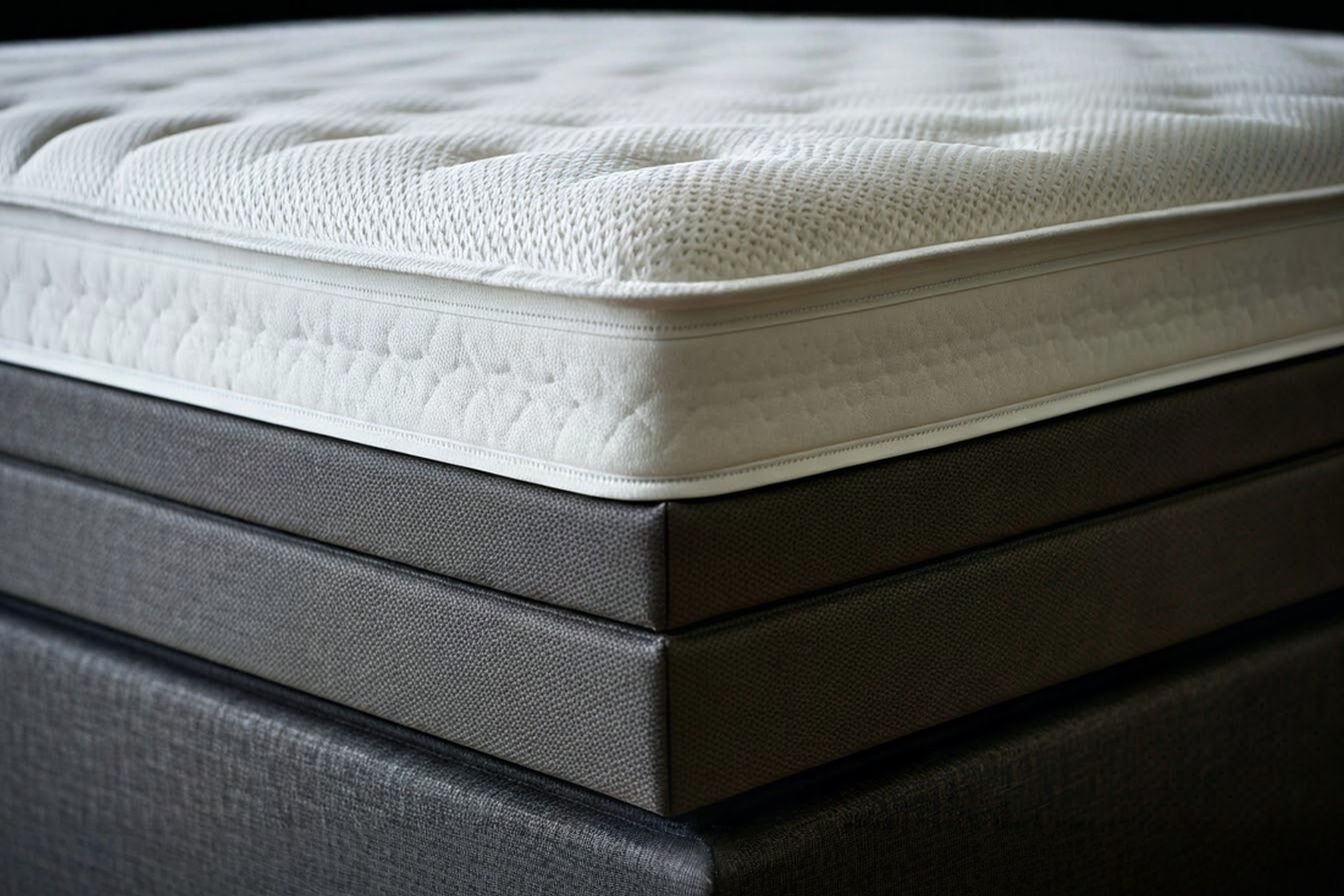
This post may contain affiliate links. If you make a purchase through these links, we may earn a commission at no additional cost to you.
When you think about luxury mattresses, big names like Sealy, Serta, or Tempur-Pedic might immediately come to mind. These companies have dominated the market for decades, spending heavily on advertising and building widespread recognition. But in recent years, a quiet revolution has been happening in the high-end sleep world. Smaller, boutique mattress makers are increasingly seen as the true leaders in luxury, often delivering a level of quality, craftsmanship, and personalized service that the giants can’t match.
This shift isn’t just about brand perception; it’s rooted in fundamental differences in how these companies operate, the materials they use, and their core philosophies. While major brands focus on scale and efficiency, many boutique makers prioritize artistry, durability, and a deeper connection to the materials and the customer. Let’s explore why these smaller players are making such a big impact and why they might offer the ultimate luxury sleep experience.
Defining Luxury Sleep: More Than Just a High Price Tag
What exactly makes a mattress “luxury”? It’s certainly not just about having a steep price. A truly luxurious mattress delivers an exceptional sleep experience night after night, year after year. This involves a combination of factors that contribute to comfort, support, durability, and even health and wellness.
At its core, luxury in a mattress means superior materials. We’re talking about high-quality components that feel incredible and perform exceptionally well. This often includes natural materials like organic cotton, wool, silk, cashmere, and natural latex, known for their breathability, temperature regulation, and resilience. It also involves advanced coil systems or high-density, specialized foams designed for optimal support and pressure relief.
Beyond materials, craftsmanship plays a huge role. Luxury mattresses are often built with meticulous attention to detail, using construction techniques that enhance durability and performance. This might involve hand-tufting, reinforced edges, or carefully layered components that work together harmoniously. It’s about how the mattress is put together, not just what goes into it.
The feel and performance are also critical. A luxury mattress should offer the right balance of plush comfort and supportive alignment for your body. It should minimize motion transfer, regulate temperature effectively, and maintain its shape and support over time. It should feel substantial, well-made, and like it was designed with your ultimate comfort in mind.
Finally, durability and longevity are hallmarks of a luxury product. A high-end mattress is an investment, and it should last significantly longer than a standard mattress, maintaining its comfort and support for ten, fifteen, or even more years. This extended lifespan is a key part of the value proposition.
The Giants: Understanding the Major Mattress Brands
Major mattress brands like Serta Simmons Bedding (which owns Serta and Beautyrest), Tempur Sealy International (Tempur-Pedic, Sealy, Stearns & Foster), and others have massive operations. They have extensive distribution networks, selling through large retail chains, department stores, and their own branded stores. Their scale allows for efficient mass production, significant marketing budgets, and broad name recognition.
Their strengths lie in their accessibility and variety. You can find their products in countless locations, making it easy to try them out. They offer a wide range of models at different price points, catering to a broad audience. Their large-scale manufacturing can lead to lower production costs per unit, which can sometimes translate to more competitive pricing in certain segments.
However, this focus on mass production and wide distribution often means a standardized approach. While they may offer different lines marketed as “luxury,” the core manufacturing process is designed for volume. This can sometimes lead to compromises in material quality or construction techniques compared to what’s possible on a smaller, more focused scale. Their materials might include more synthetic foams, polyester fibers, and machine-assembly processes to keep costs down and speed up production.
Their customer service model is also typically built for scale. While they have customer service departments, the experience might feel less personal than dealing directly with a smaller company founder or a dedicated team member who knows the product intimately. Warranties exist, but navigating claims with a large corporation can sometimes be a more bureaucratic process.
The Rise of the Artisan: Who Are the Boutique Makers?
Boutique mattress makers are typically smaller companies, often family-owned or privately held, that focus on producing a limited number of high-quality mattresses. They might sell directly to consumers online, through a small number of curated showrooms, or via specialized luxury furniture stores. Their names might not be as instantly recognizable as the major brands, but they have built strong reputations among discerning customers and sleep experts.
Think of brands like Vispring, Hastens, Savoir Beds, or even some of the newer direct-to-consumer luxury brands that emphasize natural materials and handcrafted quality. These companies often have a rich history rooted in traditional mattress-making techniques. For example, Vispring, founded in 1901, was one of the first companies to use individually pocketed coils in mattresses. Hastens, a Swedish company, started as saddle makers and applied their expertise in working with natural materials like horsehair to beds.
Their philosophy centers on quality over quantity. They aren’t trying to produce millions of mattresses a year. Instead, they focus on using the best possible materials and employing skilled artisans to build each mattress by hand. This allows for a level of attention to detail that’s simply not feasible in a mass-production environment.
These makers often have a deep understanding of materials and their properties. They source premium components, often from specific regions known for quality, like long-strand horsehair from Sweden or cashmere from Mongolia. They understand how different layers interact and how to combine them to create specific feels and support characteristics.
Craftsmanship vs. Mass Production: A Tale of Two Approaches
This is where the fundamental difference between boutique and major brands in the luxury segment becomes most apparent. It’s the difference between a handcrafted item and a factory-produced one.
Mass Production (Major Brands): Large manufacturers rely on assembly lines, specialized machinery, and standardized processes to build mattresses quickly and efficiently. Components are often pre-fabricated and assembled using automated or semi-automated methods. This approach is excellent for consistency across millions of units and keeping labor costs lower.
- Simplified Explanation: Big companies use machines and assembly lines to make lots of mattresses fast and cheap.
- Detailed Explanation: In mass production, processes are highly optimized for speed and volume. Materials like large sheets of foam or pre-assembled coil units are moved along conveyor belts. Automated machinery cuts materials, applies adhesives, and stitches covers. While quality control exists, it often relies on spot checks and standardized testing rather than individual inspection of each unit. The goal is uniformity and efficiency across a vast output.
Craftsmanship (Boutique Makers): Boutique makers often employ skilled artisans who build mattresses largely by hand. Techniques like hand-tufting, side-stitching, and hand-layering of materials are common. Each mattress might be worked on by a small team, or even a single craftsperson, from start to finish.
- Simplified Explanation: Smaller companies have skilled people who build each mattress carefully by hand, paying close attention to every part.
- Detailed Explanation: Hand-tufting, for instance, involves passing long needles completely through the mattress layers and securing them with exterior buttons or ties. This process, done by hand, compresses the layers, prevents shifting, and creates a durable, sculpted surface. Side-stitching (or hand-side stitching) involves sewing the mattress border to the spring unit, providing exceptional edge support and stability that machine methods can’t replicate. Hand-layering allows artisans to precisely arrange materials like wool or cotton batting to ensure even distribution and consistent feel. This hands-on approach allows for greater control over quality and the ability to make minor adjustments during the build process.
This handcrafted approach isn’t just for show; it directly impacts the quality and performance of the mattress. Hand-tufting prevents materials from settling or clumping over time, extending the mattress’s lifespan. Hand-side stitching creates a robust edge that won’t sag, giving you a larger usable sleep surface. The careful layering of natural materials ensures optimal breathability and comfort. These details, while time-consuming and more expensive to execute, contribute significantly to the mattress’s durability, comfort, and overall luxury feel.
Materials Matter: Superior Components in Boutique Mattresses
One of the most significant reasons boutique makers excel in luxury is their unwavering commitment to using the finest materials available. While major brands may use some quality components in their higher-end lines, boutique makers often build their entire product range with materials that are naturally superior, more durable, and often more sustainable.
- Natural Latex vs. Synthetic Foams: Many boutique luxury mattresses feature natural latex, harvested from rubber trees. Natural latex is highly durable, resilient, breathable, and naturally hypoallergenic and resistant to dust mites. It offers buoyant support and excellent pressure relief.
- Simplified Explanation: Boutique mattresses often use natural rubber foam (latex) from trees, which lasts longer, breathes better, and is good for people with allergies. Big companies use man-made foams.
- Detailed Explanation: Natural latex is produced using either the Dunlop or Talalay process. Dunlop latex is denser and often used for support layers, while Talalay latex is lighter and often used for comfort layers. Both are significantly more durable and breathable than petroleum-based polyurethane foams commonly used in mass-market mattresses. Polyurethane foams can off-gas volatile organic compounds (VOCs) and tend to degrade and soften more quickly over time. Natural latex, conversely, maintains its properties for many years and has minimal off-gassing.
- High-Quality Coils and Support Systems: While pocketed coils are common in both segments, boutique makers often use higher-gauge steel, more coil turns, and greater coil density. They might also use unique coil configurations or combine different types of coils within a single mattress to achieve specific support characteristics.
- Simplified Explanation: Smaller companies use stronger, better-designed springs that give more support and last longer than the springs in regular mattresses.
- Detailed Explanation: Coil gauge refers to the thickness of the wire (lower gauge means thicker wire). Higher coil counts, especially when combined with independent pocketing, allow for more precise contouring and reduced motion transfer. Boutique makers might use tempered steel for increased durability or employ multi-zoned coil systems that provide targeted support to different areas of the body, such as firmer support in the lumbar region and softer support at the shoulders and hips.
- Natural Fibers (Wool, Cotton, Silk, Cashmere) vs. Polyester Blends: Boutique luxury mattresses generously use natural fibers in their comfort layers and covers. Wool is excellent for temperature regulation, wicking away moisture and providing warmth in winter and coolness in summer. Cotton is breathable and soft. Silk and cashmere add incredible softness and a touch of opulence.
- Simplified Explanation: Boutique mattresses use natural soft materials like wool, cotton, silk, and cashmere on top, which feel great and help you stay cool or warm. Big companies often use cheaper man-made materials.
- Detailed Explanation: These natural fibers are often hand-layered in thick batting, providing plush comfort and contributing to the mattress’s breathability. Wool is naturally flame resistant, often allowing boutique makers to avoid chemical flame retardants. Polyester and synthetic blends, while less expensive, don’t offer the same level of breathability, moisture wicking, or durability as natural fibers. They can trap heat and may compress more quickly over time.
- Certifications and Sustainability: Many boutique makers prioritize sustainability and health, seeking certifications like GOTS (Global Organic Textile Standard) for organic cotton and wool, GOLS (Global Organic Latex Standard) for organic latex, and Oeko-Tex Standard 100 for overall material safety.
- Simplified Explanation: Many small luxury mattress companies use materials that are certified organic and safe, showing they care about your health and the planet.
- Detailed Explanation: These certifications involve rigorous testing and verification processes that ensure materials are grown or produced organically, processed without harmful chemicals, and meet strict environmental and social criteria. Choosing certified materials adds to the cost but provides peace of mind for consumers concerned about their health and environmental impact. Major brands may use some certified components, but it’s less common for their entire mattress to meet these high standards across all materials.
The generous use of these high-quality, often natural, materials is a key differentiator. They contribute directly to the mattress’s comfort, durability, temperature regulation, and overall luxurious feel. While these materials are more expensive than their synthetic counterparts, they provide a superior sleep surface that performs better and lasts longer.
The Personal Touch: Customization and Bespoke Options
One area where boutique makers truly shine is in offering personalized service and customization options. Because they operate on a smaller scale and build mattresses by hand, they have the flexibility to tailor products to individual customer needs in ways that mass manufacturers simply cannot.
This might involve offering different firmness levels on each side of a king or queen mattress to accommodate couples with different preferences. Some makers allow you to adjust the layering of materials to fine-tune the feel. High-end brands like Hastens and Savoir Beds offer truly bespoke options, where the mattress is built to your exact specifications, taking into account your height, weight, preferred sleeping position, and even any specific comfort or support needs.
- Simplified Explanation: Smaller companies can often build a mattress just for you, letting you choose how soft or firm it is, or even making each side different for couples.
- Detailed Explanation: This level of customization goes beyond simply choosing from a few predefined firmness options. It can involve selecting specific coil tensions, varying the amount and type of natural fiber fill, or even altering the dimensions of the mattress to fit an antique bed frame. This bespoke approach ensures that the mattress is perfectly suited to the individual sleeper, optimizing comfort and support for their unique body and preferences. This level of personalization is a significant luxury in itself, ensuring the customer gets a mattress that feels like it was made just for them.
Major brands, due to their production scale, must stick to standardized models. While they offer different firmness options, true customization or bespoke builds are not part of their business model. This is a significant advantage for boutique makers catering to customers who want a truly personalized sleep solution.
Durability and Longevity: Built to Last
A luxury mattress is an investment, and its longevity is a critical part of its value. Boutique luxury mattresses are typically built with durability as a primary goal, using construction techniques and high-quality materials designed to withstand years of use without significant degradation.
The handcrafted techniques, like hand-tufting and hand-side stitching, play a major role here. By securing the layers and reinforcing the edges, these methods prevent shifting, sagging, and loss of support that can plague mass-produced mattresses over time. The use of resilient natural materials like natural latex, high-density foams, and durable natural fibers also contributes significantly to the mattress’s lifespan. These materials are less prone to body impressions and loss of resilience compared to lower-quality synthetics.
- Simplified Explanation: Luxury mattresses from small makers are built very strong with good materials and techniques so they last much longer than regular mattresses.
- Detailed Explanation: The expected lifespan of a high-quality boutique luxury mattress is often 15-20 years or even more, assuming proper care. This contrasts sharply with the typical lifespan of a mass-market mattress, which is often cited as 7-10 years before significant wear and tear, sagging, or loss of support occurs. While the initial cost of a boutique luxury mattress is higher, its extended lifespan can make the cost per year of use comparable to, or even lower than, repeatedly replacing less expensive mattresses. The use of robust coil systems, durable foundation materials, and meticulous assembly ensures that the mattress maintains its structural integrity and comfort properties for decades.
Major brands, while offering warranties, often build mattresses with an expected lifespan aligned with the industry average. The materials and construction methods used in mass production, while efficient, may not offer the same level of long-term durability as the handcrafted techniques and premium materials favored by boutique makers.
Customer Experience: Service That Goes the Extra Mile
Beyond the product itself, the customer experience offered by boutique mattress makers is often a key part of the luxury package. Because they are smaller, they can provide a level of personalized service that large corporations struggle to replicate.
This might start with the sales process. When you contact a boutique maker, you might speak directly with someone who knows the products inside and out, perhaps even one of the craftspeople or the company founder. They can spend significant time understanding your specific needs and preferences, guiding you toward the best mattress for you. This contrasts with the typical retail experience, where sales associates may have limited product knowledge or be focused on selling specific brands.
- Simplified Explanation: When you buy from a small luxury mattress company, you often get very helpful and personal service from people who really know their mattresses.
- Detailed Explanation: Many boutique makers offer extended in-home trial periods, allowing you to truly test the mattress in your own environment. They may also offer white-glove delivery and setup services, ensuring your new mattress is placed correctly and all packaging is removed. Should you have an issue, dealing with customer service is often more direct and less bureaucratic. Warranties are typically comprehensive and backed by a company with a vested interest in maintaining its reputation for quality and service. The focus is on building a relationship with the customer and ensuring their complete satisfaction.
This personalized, attentive service adds significant value to the luxury purchase. It makes the buying process more enjoyable and provides peace of mind knowing that the company stands behind its product and is readily available to assist you.
Price Point: Understanding the Value
There’s no getting around it: boutique luxury mattresses typically come with a higher price tag than mattresses from major brands. Prices can range from several thousand dollars to tens or even hundreds of thousands for truly bespoke, ultra-premium models. This initial cost can be a barrier for many consumers.
However, it’s essential to view this price through the lens of value and longevity. While the upfront cost is higher, the extended lifespan of a well-made luxury mattress means you won’t need to replace it as often. If a $15,000 boutique mattress lasts 20 years, the annual cost is $750. If a $3,000 mass-market mattress lasts 7 years, the annual cost is approximately $428. The mass-market option is still cheaper annually in this example, but the luxury mattress offers superior materials, craftsmanship, and comfort for the entire 20 years.
- Simplified Explanation: Luxury mattresses from small companies cost more money upfront, but they last much longer and feel better, so they can be a good investment over time.
- Detailed Explanation: The higher cost reflects the expense of premium natural materials, the labor-intensive handcrafted construction methods, and the personalized service. These are not cost-cutting operations; they are quality-maximizing operations. While the annual cost might still be higher for the luxury option, the difference in sleep quality, durability, and overall experience can justify the investment for those who prioritize sleep health and comfort. Furthermore, the environmental impact of replacing a mattress less frequently is also a consideration.
The value proposition isn’t just about the financial cost over time, but also the value of superior sleep. Quality sleep is fundamental to health, mood, and productivity. Investing in a mattress that provides optimal comfort and support can have a significant positive impact on your overall well-being. For those who can afford it, the price of a boutique luxury mattress is seen as an investment in their health and quality of life.
Potential Downsides: What to Consider with Boutique Makers
While boutique luxury makers offer significant advantages, there are a couple of potential downsides to consider:
- Limited Distribution: You won’t find these mattresses in every major furniture store. You might need to travel to a specific showroom or be comfortable purchasing online without trying the mattress first (though generous trial periods help mitigate this). This can make the shopping process less convenient for some.
- Longer Lead Times: Because these mattresses are often handcrafted to order, there might be a waiting period between placing your order and receiving your mattress. This is different from mass-market mattresses that are typically held in stock and can be delivered quickly.
These factors are a direct result of their business model, which prioritizes quality and customization over mass availability and speed. For many customers seeking true luxury, these minor inconveniences are a small price to pay for the superior product and experience.
Making Your Choice: Finding the Right Luxury Mattress
If you’re considering investing in a luxury mattress, don’t limit yourself to the big names you see advertised everywhere. Explore the world of boutique makers.
- Do your research: Look into companies known for their craftsmanship, use of natural materials, and positive customer reviews.
- Understand the materials: Educate yourself on the benefits of natural latex, wool, cotton, and different types of coil systems. Don’t be afraid to ask detailed questions about where materials are sourced and how the mattress is constructed.
- Consider your needs: Think about your preferred sleeping position, any pain points, and whether you sleep hot or cold. Look for mattresses designed to address your specific requirements.
- Inquire about customization: If you have unique needs or preferences, ask about bespoke options or the ability to customize firmness levels.
- Check trial periods and warranties: Understand the terms of the in-home trial and the length and coverage of the warranty. This provides peace of mind for your investment.
- Visit a showroom if possible: While not always feasible, experiencing a luxury mattress in person can be incredibly helpful in making your decision.
Choosing a luxury mattress is a personal journey. By looking beyond the major labels and exploring the offerings of boutique makers, you might discover a level of quality, comfort, and service that truly elevates your sleep experience.
Conclusion: The Future of Luxury Sleep
The luxury mattress market is evolving. While major brands continue to hold significant market share, the rise and success of small boutique makers demonstrate a growing demand for authenticity, craftsmanship, and superior quality. These smaller companies are outperforming the giants in the luxury segment not through massive marketing campaigns, but through a steadfast commitment to traditional techniques, premium materials, and personalized customer care.
For consumers seeking the very best in sleep, the exploration of boutique luxury mattress brands is essential. They offer a compelling alternative to mass-produced options, providing mattresses that are not only incredibly comfortable and supportive but also built to last, often using healthier, more sustainable materials. As more people prioritize sleep health and seek products that align with values of quality and craftsmanship, the influence and success of these artisan mattress makers are only set to grow. The future of luxury sleep looks increasingly handcrafted, personal, and rooted in the pursuit of genuine quality.

